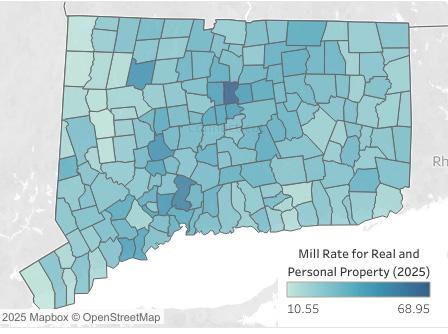
2 minute read
Connecticut Property Tax Overview
The property tax is the cornerstone of local government finance in Connecticut. Unlike many states, Connecticut imposes no statewide property tax. Instead, the 169 towns and cities serve as independent taxing authorities, responsible for assessing, levying, and collecting property taxes. As such, the property tax is not only the principal source of revenue for municipalities, but also the financial foundation for funding education, public safety, infrastructure, social services, libraries, and more.
The Connecticut property tax system is governed by state statutes along with local provisions at the municipal level. This has led to significant variation across towns in both tax burdens and revenue capacity. Connecticut’s dependency on property taxes, especially in the absence of robust alternative revenue streams, has been the subject of considerable scrutiny and reform discussions for decades.

How Property Tax Is Calculated
Connecticut law requires towns to assess real and personal property at 70% of its fair market value. This assessed value is then multiplied by the town’s mill rate, where one mill equals $1 of tax for every $1,000 of assessed value. Towns determine their mill rates annually during the budget process. As a result, the actual tax owed on a property reflects both the property’s assessed value and the town’s fiscal needs for that year.
(Assessed Value ÷ 1,000) × Mill Rate = Annual Property Tax
For example, a home with a market value of $400,000 would be assessed at $280,000. If the town’s mill rate is 35, the annual tax would be $9,800. Mill rates vary widely between municipalities. Lower-income communities often have higher mill rates due to lower property values, leading to a regressive structure that raises equity concerns. According to the Office of Policy and Management, property taxes in some towns account for over 90% of all local revenue.
Property tax bills are generally sent out twice a year, with due dates in July and January. Interest accrues at 1.5% per month on delinquent taxes, creating compounding debt for struggling households and businesses.



